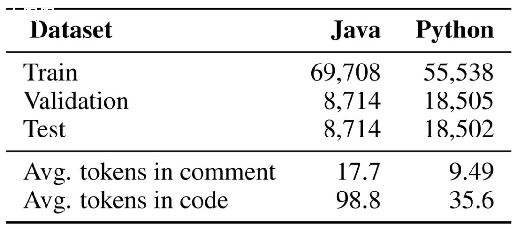

虽然计算机拥有相对大量的电子计算元件、巨大的存储空间,并且这些计算机的运行频率比肉蓬蓬、软绵绵的生物大脑要快得多,但是即使是像鸽子一样小的大脑,其能力也远远大于这些电子计算机.
传统的计算机按照严格的串行顺序,相当准确具体地处理数据.对于这些冰冷坚硬的计算机而言,不存在模糊性和不确定性.而另一方面,动物的大脑表面上看起来以慢得多的节奏运行,却似乎以并行方式处理信号,模糊性是其计算的一种特征.
虽然神经元有各种形式,但是所有的神经元都是将电信号从一端传输到另一端,沿着轴突,将电信号从树突传到树突.然后,这些信号从?一个神经元传递到另一个神经元.
我们需要多少神经元才能执行相对复杂的有趣任务呢?

激活函数:
阶跃函数,S函数.
Shape Parameters
形态参数
While a general continuous random variable can be shifted and scaled
with the loc and scale parameters, some distributions require additional

shape parameters. For instance, the gamma distribution, with density
+(x,a)=+(+x)a?1f(a)e?+x,
requires the shape parameter a. Observe that setting + can be obtained by setting the scale keyword to 1/+.
虽然一个一般的连续随机变量可以被位移和伸缩通过loc和scale参数,但一些分布还需要额外的形态参数.作为例子,看到这个伽马分布,这是它的密度函数
要求一个形态参数a.注意到+的设置可以通过设置scale关键字为1/+进行.
Let's check the number and name of the shape parameters of the gamma
distribution. (We know from the above that this should be 1.)
让我们检查伽马分布的形态参数的名字的数量.(我们知道从上面知道其应该为1)
from scipy.stats import gamma
gamma.numargs
gamma.shapes
'a'
Now we set the value of the shape variable to 1 to obtain the
exponential distribution, so that we compare easily whether we get the
results we expect.
现在我们设置形态变量的值为1以变成指数分布.所以我们可以容易的比较是否得到了我们所期望的结果.
Notice that we can also specify shape parameters as keywords:
注意我们也可以以关键字的方式指定形态参数:
Freezing a Distribution
冻结分布
Passing the loc and scale keywords time and again can become quite
bothersome. The concept of freezing a RV is used to solve such problems.
不断地传递loc与scale关键字最终会让人厌烦.而冻结RV的概念被用来解决这个问题.
By using rv we no longer have to include the scale or the shape
parameters anymore. Thus, distributions can be used in one of two ways,

either by passing all distribution parameters to each method call (such
as we did earlier) or by freezing the parameters for the instance of the
distribution. Let us check this:
通过使用rv我们不用再更多的包含scale与形态参数在任何情况下.显然,分布可以被多种方式使用,我们可以通过传递所有分布参数给对方法的每次调用(像我们之前做的那样)或者可以对一个分布对象冻结参数.让我们看看是怎么回事:
rv.mean(), rv.std()
This is indeed what we should get.
这正是我们应该得到的.
Broadcasting
广播
The basic methods pdf and so on satisfy the usual numpy broadcasting
rules. For example, we can calculate the critical values for the upper
tail of the t distribution for different probabilites and degrees of
freedom.
像pdf这样的简单方法满足numpy的广播规则.作为例子,我们可以计算t分布的右尾分布的临界值对于不同的概率值以及自由度.
Here, the first row are the critical values for 10 degrees of freedom
and the second row for 11 degrees of freedom (d.o.f.). Thus, the
broadcasting rules give the same result of calling isf twice:
这里,第一行是以10自由度的临界值,而第二行是以11为自由度的临界值.所以,广播规则与下面调用了两次isf产生的结果相同.
element wise matching is used. As an example, we can obtain the 10% tail
by calling
Specific Points for Discrete Distributions
离散分布的特殊之处
Discrete distribution have mostly the same basic methods as the
continuous distributions. However pdf is replaced the probability mass
function pmf, no estimation methods, such as fit, are available, and
scale is not a valid keyword parameter. The location parameter, keyword
loc can still be used to shift the distribution.
离散分布的简单方法大多数与连续分布很类似.当然像pdf被更换为密度函数pmf,没有估计方法,像fit是可用的.而scale不是一个合法的关键字参数.Location参数,关键字loc则仍然可以使用用于位移.
The computation of the cdf requires some extra attention. In the case of
continuous distribution the cumulative distribution function is in most
standard cases strictly monotonic increasing in the bounds (a,b) and
has therefore a unique inverse. The cdf of a discrete distribution,
however, is a step function, hence the inverse cdf, i.e., the percent
point function, requires a different definition:
ppf(q) = min{x : cdf(x) = q, x integer}
Cdf的计算要求一些额外的关注.在连续分布的情况下,累积分布函数在大多数标准情况下是严格递增的,所以有唯一的逆.而cdf在离散分布,无论如何,是阶跃函数,所以cdf的逆,分位点函数,要求一个不同的定义:
For further info, see the docs here.
为了更多信息可以看这里.
We can look at the hypergeometric distribution as an example
from scipy.stats import hypergeom
我们可以看这个超几何分布的例子
If we use the cdf at some integer points and then evaluate the ppf at
those cdf values, we get the initial integers back, for example
如果我们使用在一些整数点使用cdf,它们的cdf值再作用ppf会回到开始的值.
x
prb = hypergeom.cdf(x, M, n, N)
prb
hypergeom.ppf(prb, M, n, N)
If we use values that are not at the kinks of the cdf step function, we get the next higher integer back:
如果我们使用的值不是cdf的函数值,则我们得到一个更高的值.
round()函数用错了啊,你应该写成:
这样.
round(x[, n])
Return the floating point value x rounded to n digits after the decimal point. If n is omitted, it defaults to zero. Delegates to x.__round__(n).
如果对您有帮助,请记得采纳为满意答案,谢谢!祝您生活愉快!
def?f(T):
def?wrap(t):
else:return?-1
return?wrap
if?__name__?==?'__main__':
以上就是土嘎嘎小编为大家整理的python实现阶跃函数的简单介绍python实现阶跃函数的简单介绍相关咨询咨询主题介绍,如果您觉得小编更新的文章只要能对粉丝们有用,就是我们最大的鼓励和动力,不要忘记讲本站分享给您身边的朋友哦!!